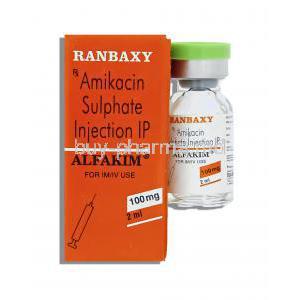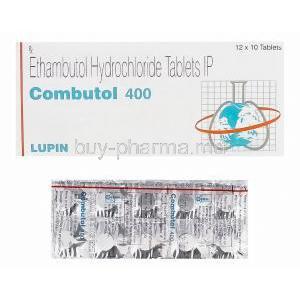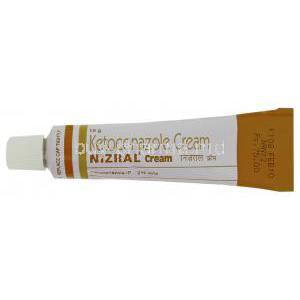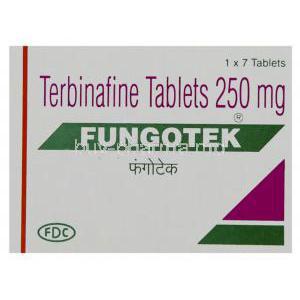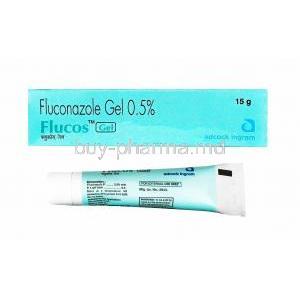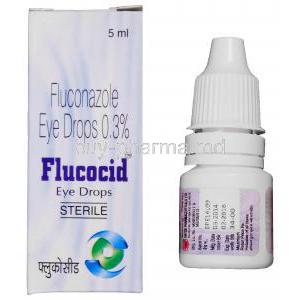Voriconazole
- I. Introduction
- II. Composition of Voriconazole
- III. How Voriconazole Works
- IV. Uses of Voriconazole
- V. Off-Label Use of Voriconazole
- VI. Dosage and Administration
- VII. Specific Administration Considerations
- VIII. Side Effects of Voriconazole
- IX. Interactions and Contraindications
- X. Warnings and Important Precautions
- XI. Overdosage
- XII. Storage and Handling Precautions
- XIII. Careful Administration of Voriconazole
I. Introduction
A. Brief History and Development of Voriconazole
Voriconazole originated in the 1990s and is an essential member of the triazole class of antifungal agents. It was created by Pfizer and received FDA approval in May 2002(1). Voriconazole was developed as an improved version of Fluconazole, with a broader antifungal range and the aim to address the limitations of its predecessor.
1. Voriconazole - DrugBank: link
B. General Uses in Medical Treatment
Voriconazole is a valuable medication used in medical mycology for treating severe fungal infections(1). Its wide range of effectiveness encompasses invasive aspergillosis, candidemia in nonneutropenic patients, and specific uncommon and severe fungal infections caused by Scedosporium apiospermum and Fusarium species(2). It's essential to acknowledge that Voriconazole is not typically recommended as the initial treatment for fungal meningitis.(3)
1. Role of Therapeutic Drug Monitoring of Voriconazole in the Treatment of Invasive Fungal Infections
2. Voriconazole : a review of its use in the management of invasive fungal infections
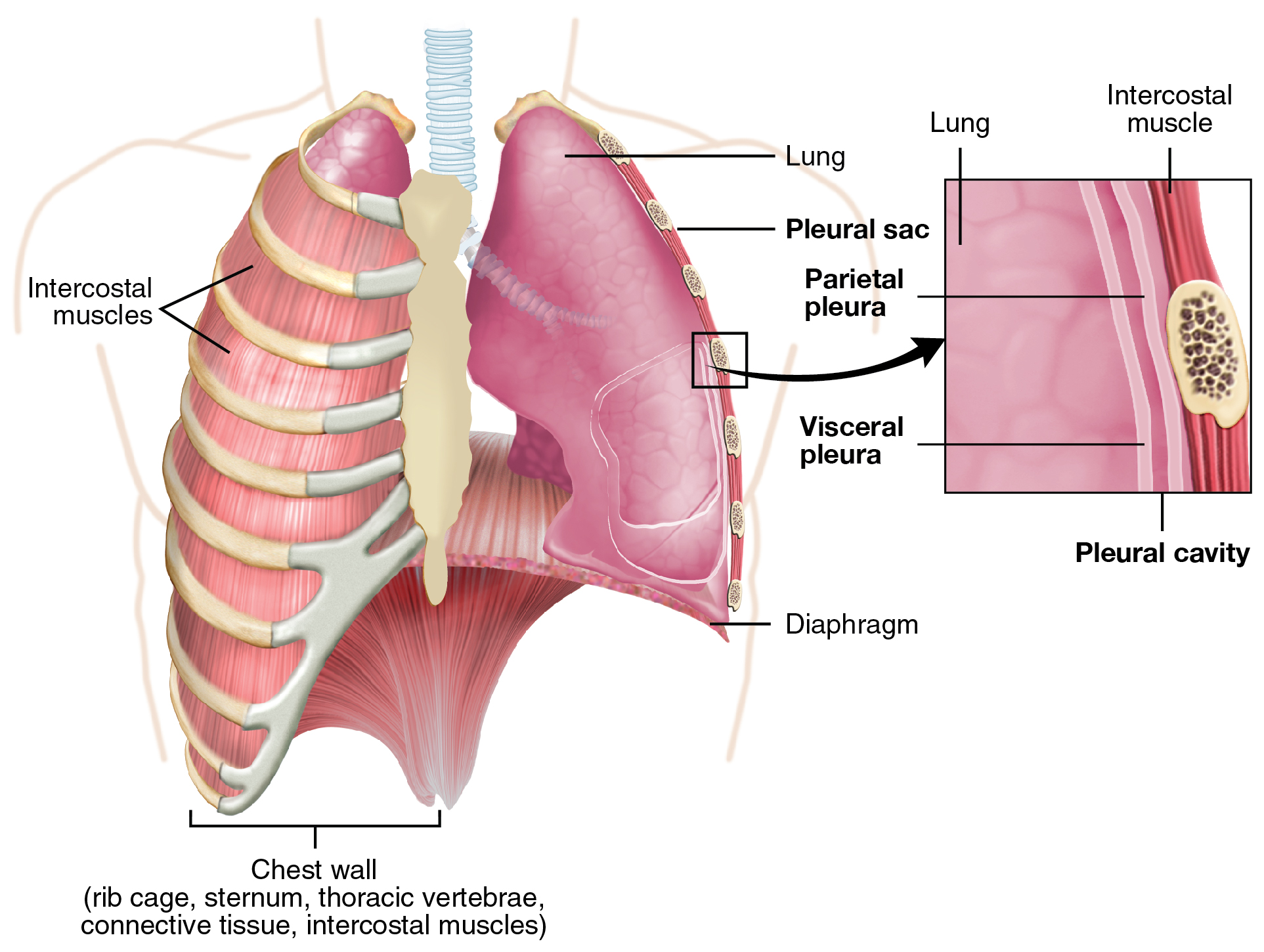
Aspergillosis in the lung
C. Importance and Relevance in Contemporary Medicine
The clinical significance of Voriconazole within the contemporary medical landscape cannot be overstated. In the realm of patient care for those with compromised immune systems caused by conditions including HIV infection or cancer and recipients of organ transplants the management and prevention of fungal infections carry substantial weight. The far reaching efficacy demonstrated by Voriconazole against potential life threatening fungi alongside its exceptional pharmacokinetic profile has solidified its place as a fundamental element in antifungal therapy.
II. Composition of Voriconazole
A. Chemical Properties and Structure
Voriconazole, a synthetic triazole, Has a distinct structure that sets it apart from other azoles. This compound stands out due to the existence of a fluoropyrimidine ring attached to the triazole moiety. In its pure form, it appears as a white powder and is highly lipophilic. Moreover, The molecule possesses two stereogenic centers, Making it optically active.
B. Active and Inactive Ingredients
Voriconazole, the active ingredient in Voriconazole, functions by directly interacting with fungal cells impeding their growth. Additionally, It is worth noting that Voriconazole also consists of inactive ingredients or excipients, In the oral form of this medication. Examples of such ingredients are lactose monohydrate, magnesium stearate, hypromellose, and titanium dioxide, among others. Although these components do not directly contribute to the antifungal effect, they fulfill crucial roles in the drug's overall formulation.
C. Variations in Formulation (Oral, Intravenous)
Voriconazole is offered in two primary forms: oral and intravenous. The oral version consists of tablets and an oral suspension providing patients with a convenient and easily managed choice. On the other hand, the intravenous formulation is used in cases where oral administration is not feasible or in critically ill patients who require prompt drug delivery. However, both formulations have comparable effectiveness. Their usage depends on the clinicians' assessment and the patient's condition.
III. How Voriconazole Works
A. Mechanism of Action against Fungal Infections
One way voriconazole exerts its effect is by utilizing a fungistatic mechanism. Its primary target within fungi is an enzyme called cytochrome P450 14α demethylase (CYP51A1). Blocking this particular enzyme prevents lanosterol from converting into ergosterol - an essential component in synthesizing fungal cell membranes. Consequently, this interruption substantially impedes both cellular growth and replication in fungi, effectively halting the further progression of the infection. (1)
1. Voriconazole: A New Triazole Antifungal Agent
B. Impact on Fungal Cell Structure and Growth
A significant impact on fungal cell structure and growth is achieved by Voriconazole's targeted approach toward ergosterol synthesis. The scarcity of ergosterol prompts an accumulation of 14α-methyl sterols within these cells. As a result, changes within their cell membranes endanger both function and integrity, ultimately obstructing further fungal cell growth. Due to this suppression in proliferation, the body's natural defenses can operate optimally to eliminate infection.
C. Spectrum of Antifungal Activity
Voriconazole demonstrates a wide range of antifungal activity, Effectively targeting various types of fungi.
- It notably exhibits potent efficacy against Aspergillus species including those that are resistant to other antifungal agents.
- Additionally, it effectively combats yeasts such as Candida species, even those strains that are resistant to Fluconazole.
- Voriconazole also demonstrates efficacy against rare moulds like Scedosporium and Fusarium species.
However, its effectiveness is comparatively lower against Zygomycetes and certain strains of Fusarium. This highlights the importance of accurate fungal diagnosis in determining the appropriate therapy for patients.
IV. Uses of Voriconazole
A. Approved Uses in Treating Fungal Infections
1. Invasive Aspergillosis Treatment
Dealing with invasive aspergillosis has posed significant challenges, particularly for individuals with compromised immune systems. Fortunately, Voriconazole has risen to prominence as a vital tool in the fight against this aggressive fungal disease(1). Its effectiveness and good patient tolerance make it an invaluable option. The FDAs' approval of Voriconazole for treating invasive aspergillosis marks a crucial milestone that underscores its impressive ability to combat this invading pathogen.(2)
1. Voriconazole-refractory invasive aspergillosis
2. Candidemia and Other Candida Infections
Voriconazole is widely recognized as a necessary treatment for Candida bloodstream infections, including candidemia. A significant breakthrough in medical science, this drug has received approval for managing esophageal candidiasis and candidemia in nonneutropenic patients. By effectively targeting these severe and possibly lethal infections, Voriconazole proves to be a lifesaving intervention.
B. Comparative Efficacy Against Other Antifungal Treatments
Comparative studies have illustrated that Voriconazole's effectiveness is on par with or exceeds other antifungal treatments. In cases of invasive aspergillosis, It has demonstrated superior efficacy compared to amphotericin B. At the same time, showcasing comparable efficacy to fluconazole in candidemia. Notably, Voriconazole offers a wider range of antifungal activity encompassing certain azole-resistant strains. Additionally, its favorable pharmacokinetics contribute to enhanced drug delivery and absorption. Furthermore, when juxtaposed with amphotericin B. Voriconazole poses a reduced risk of nephrotoxicity. This comparative effectiveness, combined with its strong safety profile, underscores the utility of Voriconazole in antifungal therapy.
C. Patient Case Studies Highlighting Successful Treatments
Many case studies have demonstrated the successful use of Voriconazole in clinical practice.
One such case shows its effectiveness in treating invasive aspergillosis in a neutropenic leukemia patient who had previously not responded well to amphotericin B. However, after initiating Voriconazole therapy, the patient experienced significant clinical improvement and eventually recovered from the infection.
Another case highlights the successful use of Voriconazole in a non-neutropenic patient with candidemia, despite showing slight improvement with fluconazole. Once switched to Voriconazole, The patient quickly saw a decline in infection markers and eventually cleared the infection. These cases serve as examples that demonstrate the potential of Voriconazole for treating severe fungal infections. They also emphasize its efficacy and safety in various clinical situations.
V. Off-Label Use of Voriconazole
A. Defining and Understanding Off-Label Use
The term 'off label' use in medicine pertains to prescribing medications for conditions or populations not explicitly approved by regulatory agencies like the FDA. It also encompasses using medications at doses or durations outside their official recommendations. Nevertheless, this practice relies on clinical judgment backed up by anecdotal evidence and emerging research indicating that these drugs are efficacious and safe beyond their officially designated uses.
B. Instances of Off-Label Use in Different Medical Scenarios
Although initially approved for specific fungal infections, Voriconazole has found widespread use in various medical situations. It has been utilized to treat several conditions, including chronic pulmonary aspergillosis, a long-term therapy to manage symptoms and prevent disease progression.
Additionally, when first-line agents are contraindicated or demonstrate an inadequate response, Voriconazole is employed in cryptococcal meningitis, a severe brain infection.
Moreover, an eye infection topical Voriconazole has exhibited its effectiveness in the treatment of fungal keratitis. These instances highlight the versatility of Voriconazole as an antifungal agent and its potential to expand therapeutic options for various fungal infections.
C. Scientific Evidence Supporting Off-Label Uses
Although regulatory bodies do not officially endorse the off-label uses of Voriconazole, there is a growing body of scientific evidence that supports these applications. For example, a study published in the "European Respiratory Journal" showed that Voriconazole therapy significantly reduced symptoms and stabilized disease progression in chronic pulmonary aspergillosis.
In addition. A study published in "Clinical Infectious Diseases" highlighted Voriconazole's potential role in managing cases of cryptococcal meningitis that do not respond to first-line agents.(1)
Furthermore, a study in "Cornea" documented successful treatment with topical Voriconazole for fungal keratitis. These studies provide validation for the off label uses of Voriconazole and emphasize the need for further research to expand its therapeutic reach.
1. Cryptococcal Meningitis: Diagnosis and Management Update
VI. Dosage and Administration
A. Standard Dosage for Adults
The typical recommended dosage for Voriconazole in adults involves starting with a 6 mg/kg loading dose administered intravenously every 12 hours for the initial 24 hours. This is followed by a 4 mg/kg maintenance dose every 12 hours. If taking the oral form the loading dose is 400 mg every 12 hours during the first day and then the maintenance dose is reduced to 200 mg every 12 hours.
B. Adjustments in Dosage for Specific Conditions
Dosage adjustments are often required for certain specific conditions. It is advisable to halve the dosage for patients with moderate to severe hepatic impairment. Moreover. In cases where there is a need to increase plasma concentrations, such as in invasive aspergillosis or non-responsive cases. The oral dose may be escalated to 300 mg every 12 hours.
C. Instructions for Administering Oral and Intravenous Forms
Taking Oral Voriconazole one hour before or one hour after consuming a meal is advised. For the intravenous form, it should be administered gradually over a time span of one to three hours. It is essential to avoid administering Voriconazole as a bolus injection as it carries the potential risk of anaphylaxis.
VII. Specific Administration Considerations
A. Administration to Elderly Patients
Making regular adjustments to the dosage solely based on age is not necessary for elderly patients. However, prudent approaches should be taken while dosing, and factors such as decreased liver, kidney, or heart functioning and any existing health conditions or ongoing drug therapies should be carefully considered within this population.
B. Voriconazole Use in Pregnant Women and Nursing Mothers
For pregnant women contemplating the usage of Voriconazole, it is imperative to thoroughly assess whether the potential gains merit any possible harm that could occur to their fetus. Additionally, research has demonstrated that Voriconazole may be detected in human breast milk. Henceforth. A conscientious decision must be made regarding whether suspension of breastfeeding or discontinuing this drug is necessary while considering its relevance and significance for maternal health.
C. Dosage and Administration for Pediatric Patients
When treating pediatric patients. It is recommended to administer a loading dose of 9 mg/kg every 12 hours during the initial day. This should then be followed by a maintenance dose of 8 mg/kg every 12 hours. It is essential to highlight that for children with lower body weight. Oral suspension is a more suitable option due to its increased dosing flexibility.
VIII. Side Effects of Voriconazole
A. Overview of Potential Side Effects
Voriconazole, Like any other medication, has the potential to induce side effects. These can vary in severity ranging from mild and commonly experienced to more uncommon yet significant.
B. Common Side Effects: Risks and Management
When taking this medication, Specific common side effects may arise, such as
- Visual disturbances
- Rash
- Fever
- Nausea
- Vomiting
- Headache
It should be noted that these reactions are usually mild in nature and transient. They are constantly improving as the body becomes accustomed to the drug. However, persisting or aggravating symptoms warrant immediate contact with one's healthcare provider for appropriate guidance and support.

Fever
C. Less Common but Serious Side Effects: Signs and Action Plan
Occurring infrequently but carrying considerable gravity are side effects that warrant serious attention, including hepatic toxicity arrhythmias as well as severe cutaneous adverse reactions. Symptoms can range from jaundice and unusually dark urine to the emergence of severe skin rashes along with palpitations. Promptly seeking medical assistance is necessary upon recognition of any such indications.
IX. Interactions and Contraindications
A. Potential Interactions with Other Medications
Voriconazole is known to interact with various medications. These include certain anti-seizure medications, specific immunosuppressants, and some antiretrovirals. Co-administering these medications with Voriconazole can potentially alter the plasma concentration of either Voriconazole or the other medication. This alteration can affect their effectiveness or safety.
B. Conditions and Factors Contraindicating Voriconazole Use
There are certain conditions and factors that indicate Voriconazole should not be used. These include known hypersensitivity to Voriconazole or its excipients as well as co-administration with certain drugs like rifampin, carbamazepine, and others that greatly reduce Voriconazole plasma concentrations. Additionally. Having long QT syndrome, which is a rare heart condition. It is also considered a contraindication because of Voriconazoles' ability to prolong the QT interval.
C. Management of Interactions and Contraindications
A multifaceted approach is necessary for effectively managing interactions and contraindications. This includes thoroughly assessing the patient's drug history and closely monitoring drug concentrations, and making timely dose adjustments. Additionally, it is important to consider alternative therapeutic options when contraindications are present.
X. Warnings and Important Precautions
A. Warnings Associated with Voriconazole Use
There are several important warnings to note regarding Voriconazole. These include the potential for hepatic toxicity, arrhythmias, and severe cutaneous adverse reactions. It is crucial for healthcare providers to closely monitor patients for signs of these conditions. If there is any suspicion or concern, Prompt intervention is necessary.
B. Precautions for Patients with Certain Health Conditions
Certain health conditions include liver disease, cardiac disease, and electrolyte disturbances. Call for particular caution in patients. It is advisable to consistently monitor these individuals' liver function, cardiac status, and electrolyte levels. Furthermore, patients with hereditary galactose intolerance should exercise caution when taking Voriconazole tablets because they contain lactose.
C. Safe Use: Lifestyle Adjustments and Monitoring Requirements
To ensure the safe use of Voriconazole, it may be necessary to make certain lifestyle adjustments. One such adjustment is avoiding direct exposure to sunlight as there is a risk of skin reactions, in addition. Regular blood tests are important in order to monitor the effectiveness of the drug and to check for any potential side effects. It may also be necessary to undergo regular eye exams as there is a risk of experiencing visual disturbances.
XI. Overdosage
A. Recognizing Symptoms of Voriconazole Overdosage
If a person exceeds the recommended dosage of Voriconazole they may experience various symptoms such as hallucinations, confusion, and temporary loss of vision. It is crucial to seek immediate medical attention if these symptoms occur.
B. Immediate Actions and Medical Interventions
For suspected overdosage, immediate medical attention has to be required, please get in touch with your doctor or emergency services immediately, the doctor or emergency services will discontinue the use of Voriconazole immediately. Hemodialysis can be performed to remove the heavy portion of Voriconazole consumed.
C. Preventive Measures to Avoid Overdosage
To prevent overdosage, It is crucial that patients strictly follow their prescribed dosage regimen and refrain from self-adjusting the doses without consulting healthcare professionals. Furthermore, engaging in patient education becomes imperative for healthcare providers as it ensures a thorough understanding of how the medication should be used. Moreover, regular monitoring of plasma drug concentrations can effectively prevent cases of overdosage.
XII. Storage and Handling Precautions
A. Proper Storage Conditions for Voriconazole
Maintaining ideal storage conditions for Voriconazole plays an integral role in safeguarding its potency. A tightly closed container within temperatures ranging from 20°C to 25°C should house this medication carefully. Alongside this, Shielding it from light and moisture remains paramount. Making the mistake of freezing or refrigerating Voriconazole would ill-advisedly compromise its efficacy.
B. Safety Measures in Handling and Disposing of Voriconazole
When handling Voriconazole, It is crucial to prioritize standard safety measures. One important step is wearing gloves to prevent direct contact with the skin. Additionally, it is essential to handle unused or expired Voriconazole with care and ensure proper disposal. Flushing it down toilets or pouring it into drains should be avoided. Seeking guidance from a pharmacist or local waste disposal company regarding safe disposal methods is highly recommended.
C. Guidance for Caregivers and Healthcare Professionals
Caregivers and healthcare professionals should know the appropriate administration and potential risks associated with Voriconazole. It is their responsibility to ensure that patients comprehend their prescribed dosage regimen and fully appreciate the significance of adhering to it if feasible pregnant women should refrain from handling Voriconazole.
XIII. Careful Administration of Voriconazole
A. Emphasizing the Importance of Adhering to Prescribed Dosage
Patients must prioritize adhering to the prescribed dosage of Voriconazole as it carries utmost importance. Straying from the recommended dose could contribute to subpar treatment outcomes, potential resistance formation, or undesirable side effects.
B. Possible Risks and Complications of Incorrect Administration
Incorrect administration of Voriconazole can result in various risks and complications. These include inadequate control of the fungal infection, development of resistance, And the possibility of overdose. An overdose of this medication can lead to severe side effects such as hallucinations, arrhythmias, or liver toxicity.
C. Role of Healthcare Providers in Ensuring Careful Administration
Healthcare providers have a crucial responsibility in ensuring the cautious administration of Voriconazole. It is their duty to offer precise instructions on the usage, dosage, and frequency of administering the medication and monitoring the patients response to treatment. Any side effects experienced and the concentration of Voriconazole in their plasma are all important aspects of their role.





